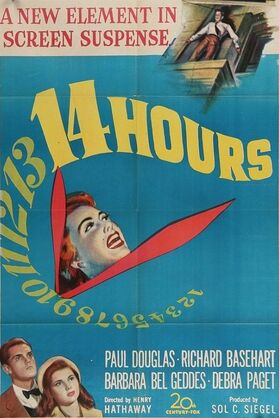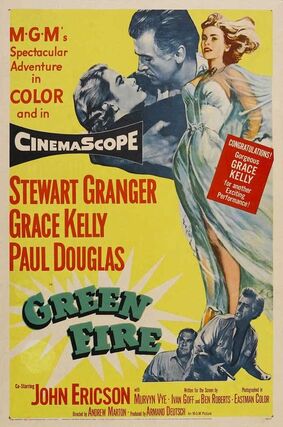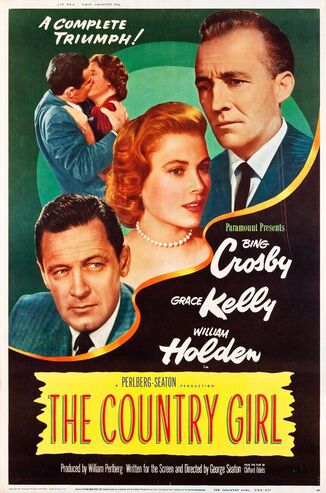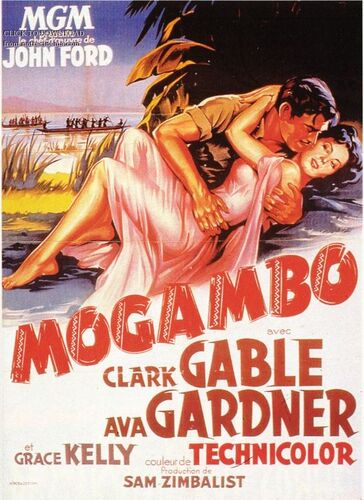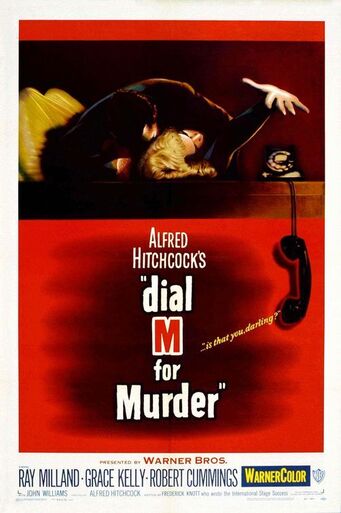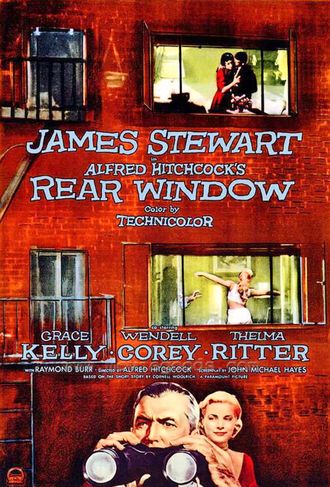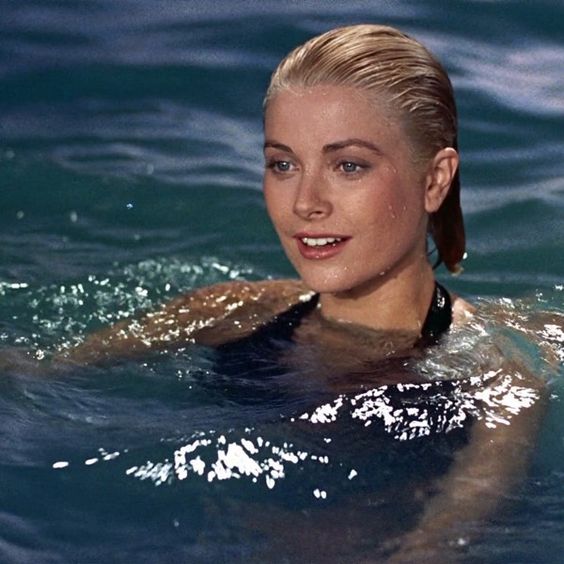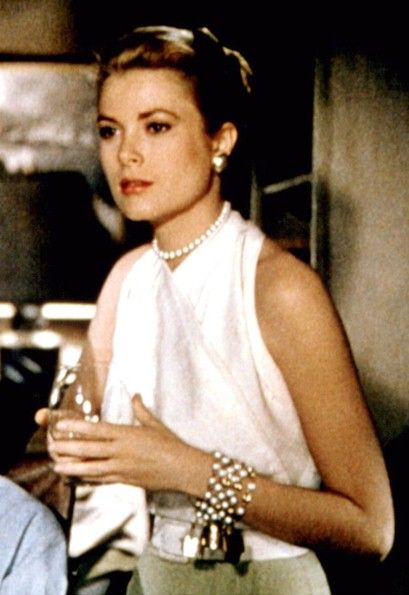Top 10 Grace Kelly Films
The Rationalization:
In Donald Spoto’s biography of Grace Kelly, High Society: The Life of Grace Kelly, he ends his introduction by stating the obvious, that “Grace was far more than just a pretty face.” While her career was remarkably short, just 11 feature films spanning 7 years, her impact on Hollywood was quite substantial & reflects the ongoing interest in her long after she died so young in 1982. In those short years , however, she was nominated for 2 Academy Awards, winning once for The Country Girl (1954), as well as acting in films by some of the greatest directors in the history of the medium, including John Ford, Fred Zinnemann, and Alfred Hitchcock 3 times. Her style was natural, yet with an overwhelming sense of elegance & sophistication. As her character in High Society (’56), Tracy Lord, tells her fiancé George Kittridge “I don’t want to put on a pedestal”, so too did Kelly wish to be seen less as the blond ice goddess of her Hitchcock films & more as a talented working actress, capable of strong dramatic or comedic roles.
In Donald Spoto’s biography of Grace Kelly, High Society: The Life of Grace Kelly, he ends his introduction by stating the obvious, that “Grace was far more than just a pretty face.” While her career was remarkably short, just 11 feature films spanning 7 years, her impact on Hollywood was quite substantial & reflects the ongoing interest in her long after she died so young in 1982. In those short years , however, she was nominated for 2 Academy Awards, winning once for The Country Girl (1954), as well as acting in films by some of the greatest directors in the history of the medium, including John Ford, Fred Zinnemann, and Alfred Hitchcock 3 times. Her style was natural, yet with an overwhelming sense of elegance & sophistication. As her character in High Society (’56), Tracy Lord, tells her fiancé George Kittridge “I don’t want to put on a pedestal”, so too did Kelly wish to be seen less as the blond ice goddess of her Hitchcock films & more as a talented working actress, capable of strong dramatic or comedic roles.
#10 Bridges at Toko-Ri (’54)/Fourteen Hours (’51). I’m going to include both of her minor roles as one ranking because it really shows how far she had come in a mere 3 years. In Fourteen Hours, a tense, docudrama starring Paul Douglass & Richard Basehart, Kelly only appears in 2 scenes & is only tangentially associated with the plot. She plays a woman contemplating divorce, waiting in her lawyer’s office while a threatens to jump off a building across the street. While she is charming in limited screen time, her role is no more than a cameo, for an actress viewers may have recognized form TV. 3 years later & after Dial M for Murder, The Country Girl & Rear Window had been released, Kelly received 2nd billing to William Holden, but again her role has limited screen time & only an emotional connection to the story of a Navy Reverse pilot who must chose to risk his life to destroy strategic bridges during the Korean War.
#9 Green Fire (’54). It was years before I discovered that Grace Kelly was an MGM contract player. Most of her best work was done on loan out to Warner Bros. & Paramount. Green Fire is a perfect example of why Kelly was constantly underwhelmed by the parts her home studio offered her. The story of emerald mining in South America, Kelly stars as a plantation owner at odds & in love with a mining speculator played by Stewart Granger. The film also co-stars Paul Douglass as Granger’s partner. Similar to the much better Mogambo, Kelly takes to the outdoor locations, but the story of greed & danger never quite takes off & the film rings hollow. Kelly’s performance is a mixture of “indoor”, which is all elegance & grace, & outdoor, which is pull up your boot straps and get to work. Because os this the film is off balance & never seems sure enough on how to best present Kelly.
#8 High Noon (’52). Kelly’s 2nd feature film not only established her as an emerging star, but also set in motion an oft repeated casting practice of pairing her with a much older man. In High Noon, the 51-year old Gary Cooper plays newly husband to the 22-year old Kelly. The Fred Zinnemann directed classic revolves around the rugged & sensitive nature of Cooper’s washed up Marshall as he fends off a gang of outlaws out to murder him for revenge. The film is an allegory for doing what’s right in the face of overwhelming odds & High Noon affords Cooper one of his best screen performances, in an Oscar winning role. Kelly, playing a Quaker who abhors violence of all kinds, initially is placed as an impediment to the marshal’s executing his moral obligation, but rallies to his support when she’s needed the most. Kelly’s part is again rather small, but unlike Fourteen Hours, the performance is highly impactful & fuels the plot. Producer Stanley Kramer, who would go on to direct Judgement at Nuremberg (’61) & Guess Who’s Coming to Dinner (’67), signed Kelly after seeing a picture of her. After meeting Kelly, he was confident that the shy & nervous actress would be perfect for the role. While her nerves & self-consciousness are evident in her performance, they serve the character very well & Kelly was generally lauded in the minor role. High Noon is a much better movie than several rated above it, but based on the size of Kelly’s performance I’ve rated it lower.
#9 Green Fire (’54). It was years before I discovered that Grace Kelly was an MGM contract player. Most of her best work was done on loan out to Warner Bros. & Paramount. Green Fire is a perfect example of why Kelly was constantly underwhelmed by the parts her home studio offered her. The story of emerald mining in South America, Kelly stars as a plantation owner at odds & in love with a mining speculator played by Stewart Granger. The film also co-stars Paul Douglass as Granger’s partner. Similar to the much better Mogambo, Kelly takes to the outdoor locations, but the story of greed & danger never quite takes off & the film rings hollow. Kelly’s performance is a mixture of “indoor”, which is all elegance & grace, & outdoor, which is pull up your boot straps and get to work. Because os this the film is off balance & never seems sure enough on how to best present Kelly.
#8 High Noon (’52). Kelly’s 2nd feature film not only established her as an emerging star, but also set in motion an oft repeated casting practice of pairing her with a much older man. In High Noon, the 51-year old Gary Cooper plays newly husband to the 22-year old Kelly. The Fred Zinnemann directed classic revolves around the rugged & sensitive nature of Cooper’s washed up Marshall as he fends off a gang of outlaws out to murder him for revenge. The film is an allegory for doing what’s right in the face of overwhelming odds & High Noon affords Cooper one of his best screen performances, in an Oscar winning role. Kelly, playing a Quaker who abhors violence of all kinds, initially is placed as an impediment to the marshal’s executing his moral obligation, but rallies to his support when she’s needed the most. Kelly’s part is again rather small, but unlike Fourteen Hours, the performance is highly impactful & fuels the plot. Producer Stanley Kramer, who would go on to direct Judgement at Nuremberg (’61) & Guess Who’s Coming to Dinner (’67), signed Kelly after seeing a picture of her. After meeting Kelly, he was confident that the shy & nervous actress would be perfect for the role. While her nerves & self-consciousness are evident in her performance, they serve the character very well & Kelly was generally lauded in the minor role. High Noon is a much better movie than several rated above it, but based on the size of Kelly’s performance I’ve rated it lower.
#7 The Swan (’56). Many people have looked at The Swan as a dress rehearsal for Kelly’s decision less than a year later to marry Prince Rainier of Monaco. The film’s release, in fact, was delayed to coincide with Grace’s wedding in order to generate more business. Kelly plays a young princess of a minor European house who is forced to woo her cousin, the crown prince, by her domineering mother. Alec Guinness plays the prince as a spoiled brat, so the princess must enlist a rival to temp him, in this case her brothers’ tutor, played by Louis Jourdan. The tutor harbors a deep love for the princess, but is unable to express it, until it’s too late. As with most of her other films made for MGM, The Swan just doesn’t get Kelly’s on-screen appeal quite right. Here she is cold & aloof, petulant & insecure, which leads to a rather unfortunate ending.
#6 High Society (’56). A remake of the classic screwball comedy The Philadelphia Story (’40) that starred Katherine Hepburn, Cary Grant, & Jimmy Stewart, High Society was turned into a musical that substituted Bing Crosby for Grant & Frank Sinatra for Stewart. Kelly plays spoiled rich girl Tracy Lord, out to marry milquetoast George Kittredge (John Howard) to exercise the demons of her failed marriage to Crosby’s Jazz singer C.K. Dexter-Haven. The film is certainly pleasant enough, but as with any attempt to re-make a classic, there is danger in the comparison. Kelly plays Lord less as a loopy manipulator & more as an insecure know it all, which I find the happiest of the changes between the 2 films. Kelly doesn’t have the gravitas that Hepburn had, but she brings a youthfulness to the part that overcomes her occasional slip into Hepburn’s East Coast twang. Louis Armstrong also adds a wonderful addition to the film playing himself as the leader of a Jazz band & occasional Greek chorus leader commentating on the story in song.
#5 The Country Girl (’54). Along with Dial M For Murder & Rear Window also released in 1954, The Country Girl’s release signaled the greatest year in Kelly’s career. That she capped it off with an Oscar for Best Actress for The Country Girl is no slight on the other 2 films, which I have ranked higher, but a reflection on how far she had come as an actress in such a short time. In just her 6th feature film Kelly’s performance, in the thankless role of the rigid wife to an alcoholic has been singer/performer (again played by Crosby), shows the potential for her as a dramatic actress. The role is unglamourous to be sure, even as she attracts the attention of her husband’s director, played by William Holden, but what make Kelly so believable is the understated resignation to her plight. She loves her husband at the expense of her happiness & plays the part as a seasoned character actor would have, not as the leading lady personae she had already established. Sadly, it also shows how Kelly may have evolved as an actress as she aged, had she remained in the spotlight.
#6 High Society (’56). A remake of the classic screwball comedy The Philadelphia Story (’40) that starred Katherine Hepburn, Cary Grant, & Jimmy Stewart, High Society was turned into a musical that substituted Bing Crosby for Grant & Frank Sinatra for Stewart. Kelly plays spoiled rich girl Tracy Lord, out to marry milquetoast George Kittredge (John Howard) to exercise the demons of her failed marriage to Crosby’s Jazz singer C.K. Dexter-Haven. The film is certainly pleasant enough, but as with any attempt to re-make a classic, there is danger in the comparison. Kelly plays Lord less as a loopy manipulator & more as an insecure know it all, which I find the happiest of the changes between the 2 films. Kelly doesn’t have the gravitas that Hepburn had, but she brings a youthfulness to the part that overcomes her occasional slip into Hepburn’s East Coast twang. Louis Armstrong also adds a wonderful addition to the film playing himself as the leader of a Jazz band & occasional Greek chorus leader commentating on the story in song.
#5 The Country Girl (’54). Along with Dial M For Murder & Rear Window also released in 1954, The Country Girl’s release signaled the greatest year in Kelly’s career. That she capped it off with an Oscar for Best Actress for The Country Girl is no slight on the other 2 films, which I have ranked higher, but a reflection on how far she had come as an actress in such a short time. In just her 6th feature film Kelly’s performance, in the thankless role of the rigid wife to an alcoholic has been singer/performer (again played by Crosby), shows the potential for her as a dramatic actress. The role is unglamourous to be sure, even as she attracts the attention of her husband’s director, played by William Holden, but what make Kelly so believable is the understated resignation to her plight. She loves her husband at the expense of her happiness & plays the part as a seasoned character actor would have, not as the leading lady personae she had already established. Sadly, it also shows how Kelly may have evolved as an actress as she aged, had she remained in the spotlight.
#4 Mogombo (’53). For me, Mogambo is the most surprising film on this list because Kelly is cast against 2 Hollywood heavyweights in Clark Gable & Ava Gardner & goes toe to toe with both of them, even as she has the least showy role in the movie. Mogambo would be Grace’s breakout role & launch her career. Essentially, a lesser actress would have been pushed to the margins of the screen by the 2 titans, but Kelly does well with what could be called an ornamental part. That she adds depth to the part of an upper crust English wife, well out of her element in the African bush, married to a naïve & mannered bore, is a testament to her burgeoning skills as a serious actress. Gable, reprising his role from 1932’s Red Dust, where Mary Astor played Kelly’s role & Jean Harlow played Gardner’s, can be believed to seduce & fall in love with Kelly’s Linda Nordley as much because of her beauty as for her individuality, a quality Kelly brings to the role. Seen out of context of Kelly’s career, Mogambo would appear to be the work of a much more seasoned actress & reflects the one MGM part that was worthy of Kelly’s talent.
Trying to rank the 3 films Kelly made with Alfred Hitchcock comes down to her performances versus how I look at the films as a whole. Rear Window is by far my favorite film directed by Hitchcock, but for this list, her part as American socialite Frances Stevens stands out as the best & most rewarding of her career because it captures everything that made Grace Kelly one of the true icons of 1950’s Hollywood.
#3 Dial M for Murder (’54). One of only 2 plays Hitchcock adapted for Hollywood, & largely limited to one set, Dial M for Murder may have been a cinematic exercise for Hitchcock, but it launched what can be argued as the greatest collaboration with an actor in his career. While Cary Grant & Jimmy Stewart were often identified as alter egos for Hitch, it was Kelly who represented his idealized woman. In Dial M, she personifies the Hitchcock heroine in her beauty, her intelligence & her determination, but it’s what underneath those qualities that separates Kelly from Hitch’s other leading ladies. The story of a husband out to commit the perfect murder as revenge on his cheating wife, Dial M for Murder pairs Kelly with Ray Milland as the plotting husband & Robert Cummings as her mystery writer former lover. By appearing as the doting wife, while having a lover on the side, Kelly unmasked the “icy blonde exterior, with a smoldering sexuality underneath” that Hitchcock so often sought for his leading ladies. Hitchcock immediately bonded with Kelly over her pragmatism surrounding the murder scene. As they went through her color-coded wardrobe, Hitch intended to put Kelly in a velvet robe as she is attacked by the murderer. Kelly, whom Hitch always touted as being perfectly agreeable, begged to differ in this case, explaining that if she were awakened in the night by a phone call, she would merely get out of bed as she was & wouldn’t put on a bulky robe. Hitch, ever the voyeur, couldn’t have been happier & the 2 were bonded before filming even began. (McGilligan, p. 471).
Made on loan out to Warner Bros, Kelly was chosen by Hitchcock based on a failed screen test for Paramount, in which he viewed her as “photogenic,” the buzz around Hollywood for her performance in Mogambo, as well as Hitchcock’s budgetary constraints that necessitated no more than Kelly’s $14,000 fee. Whatever brought them together & whatever bonded them afterward, Hitchcock, even in their first pairing, would begin to draw out in her performance what movie goers have long remembered in the Grace Kelly personae: elegance, wittiness, charm & an undeniable ‘presence’ on screen.
Trying to rank the 3 films Kelly made with Alfred Hitchcock comes down to her performances versus how I look at the films as a whole. Rear Window is by far my favorite film directed by Hitchcock, but for this list, her part as American socialite Frances Stevens stands out as the best & most rewarding of her career because it captures everything that made Grace Kelly one of the true icons of 1950’s Hollywood.
#3 Dial M for Murder (’54). One of only 2 plays Hitchcock adapted for Hollywood, & largely limited to one set, Dial M for Murder may have been a cinematic exercise for Hitchcock, but it launched what can be argued as the greatest collaboration with an actor in his career. While Cary Grant & Jimmy Stewart were often identified as alter egos for Hitch, it was Kelly who represented his idealized woman. In Dial M, she personifies the Hitchcock heroine in her beauty, her intelligence & her determination, but it’s what underneath those qualities that separates Kelly from Hitch’s other leading ladies. The story of a husband out to commit the perfect murder as revenge on his cheating wife, Dial M for Murder pairs Kelly with Ray Milland as the plotting husband & Robert Cummings as her mystery writer former lover. By appearing as the doting wife, while having a lover on the side, Kelly unmasked the “icy blonde exterior, with a smoldering sexuality underneath” that Hitchcock so often sought for his leading ladies. Hitchcock immediately bonded with Kelly over her pragmatism surrounding the murder scene. As they went through her color-coded wardrobe, Hitch intended to put Kelly in a velvet robe as she is attacked by the murderer. Kelly, whom Hitch always touted as being perfectly agreeable, begged to differ in this case, explaining that if she were awakened in the night by a phone call, she would merely get out of bed as she was & wouldn’t put on a bulky robe. Hitch, ever the voyeur, couldn’t have been happier & the 2 were bonded before filming even began. (McGilligan, p. 471).
Made on loan out to Warner Bros, Kelly was chosen by Hitchcock based on a failed screen test for Paramount, in which he viewed her as “photogenic,” the buzz around Hollywood for her performance in Mogambo, as well as Hitchcock’s budgetary constraints that necessitated no more than Kelly’s $14,000 fee. Whatever brought them together & whatever bonded them afterward, Hitchcock, even in their first pairing, would begin to draw out in her performance what movie goers have long remembered in the Grace Kelly personae: elegance, wittiness, charm & an undeniable ‘presence’ on screen.
#2 Rear Window (’54). If Dial M for Murder’s Margot Wendice exercised her sexual freedom offscreen, in the form of an affair, then Rear Window’s Lisa Carrol Freemont brought hers front & center, creating what I think is the greatest female character in the Hitchcock canon. As she aggressively courts the physically & emotionally impotent L.B. Jeffries (Stewart), Freemont has no problem verbalizing & physicalizing her sexuality. Her entrance, in fact, is one of the most beautiful shots in all of Hitchcock, as he slows her, in full frame, moving into kiss the sleeping Jeffries. She practically glows, but the shot also perfectly reflects her active character & foreshadows how she will drive the narrative. Kelly’s approach to the role seems to be one of carefree amusement, as she practically floats around Jeffries apartment in the early scenes. In addition to kissing Jeffries, she creates the illusion of perfection that overwhelms him, but sets her up to be the action character he is unable to be. What drives me to watch this film over & over again, with the same joy as the first time, is the scene when Lisa is in Thorwald’s apartment. Not only is the scene terrifying, but it perfectly shows Lisa’s true nature & how Jeffries comes to look at her differently. She is not the statue on a pedestal, but is willing to risk her life to prove her love. Lisa’s focus throughout the scene always seems to be Jeffries & not the immediate danger Thorwald represents, with Kelly playing it with a perfect mix of determination & casualness that runs counter to Jeffries knuckle chewing & nervous cries. She is the protagonist in Rear Window & Hitchcock’s growing confidence in Kelly’s abilities foreshadows what might have been in North by Northwest, Vertigo & in particular, Marnie, had Kelly remained in Hollywood.
#1 To Catch a Thief (’55). Sadly, To Catch a Thief would be the final film Kelly would star in for Hitchcock, but I think it’s their most perfect collaboration. As noted, I think Rear Window is a better film & Lisa Freemont may be the most purely unique Hitchcockian character, but To Catch a Thief most perfectly captures Grace Kelly. While Cary Grant wanted to play Kelly’s husband in Dial M for Murder, this film finally offered the opportunity for the man Hitchcock dreamed of being to seduce the woman he dreamed of having. Grant plays, John ‘the Cat’ Robie, a retired jewel thief being framed for a string of robberies, while Kelly plays American socialite Frances Stevens, in love with the idea of Robie, as well as the suave & sophisticated man himself. Set in the French Riviera that would eventually become her home, Kelly seems completely at home as she banters with Grant, trying to extract a confession that would clearly excite her. She is playful, during their picnic for instance, offering ‘a leg or a breast’ in an obvious attempt to entice him, she is direct, as Hitchcock pokes fun at the censors during the fireworks scene, & she is obvious, when she demeans Robie’s young French acquaintance in the water. Playful, sexual & protective, the perfect Hitchcock cocktail that also reflects what Kelly had become as an actress. She was at her best when she could mix a calculated lightness with a seriousness of purpose that reflected her determination to perfect her craft, but do it in an apparently effortless way. To Catch a Thief perfectly brings all that was Grace Kelly as an actress together in one role, her best.
#1 To Catch a Thief (’55). Sadly, To Catch a Thief would be the final film Kelly would star in for Hitchcock, but I think it’s their most perfect collaboration. As noted, I think Rear Window is a better film & Lisa Freemont may be the most purely unique Hitchcockian character, but To Catch a Thief most perfectly captures Grace Kelly. While Cary Grant wanted to play Kelly’s husband in Dial M for Murder, this film finally offered the opportunity for the man Hitchcock dreamed of being to seduce the woman he dreamed of having. Grant plays, John ‘the Cat’ Robie, a retired jewel thief being framed for a string of robberies, while Kelly plays American socialite Frances Stevens, in love with the idea of Robie, as well as the suave & sophisticated man himself. Set in the French Riviera that would eventually become her home, Kelly seems completely at home as she banters with Grant, trying to extract a confession that would clearly excite her. She is playful, during their picnic for instance, offering ‘a leg or a breast’ in an obvious attempt to entice him, she is direct, as Hitchcock pokes fun at the censors during the fireworks scene, & she is obvious, when she demeans Robie’s young French acquaintance in the water. Playful, sexual & protective, the perfect Hitchcock cocktail that also reflects what Kelly had become as an actress. She was at her best when she could mix a calculated lightness with a seriousness of purpose that reflected her determination to perfect her craft, but do it in an apparently effortless way. To Catch a Thief perfectly brings all that was Grace Kelly as an actress together in one role, her best.
In High Society, Kelly's character Tracy Lord complains that she doesn't want to put on a pedestal & admired, but would rather be loved for being real & authentic. Such was Kelly's public personae as well, but I think in films like The Country Girl & Rear Window, in particular, she was able to give her ridiculous beauty the realistic balance necessary to bring those characters to life. They had insecurities to be sure, but in The Country Girl it was her willingness to appear less than perfect that likely helped her win the Academy Award. Similarly, in Rear Window, Lisa, while idealized by Hitchcock's camera, was a character willing to risk life & limb, a go getter out for adventure. They were real people given extraordinary opportunities to shine. In many of her other roles, however, it was that image of perfection which helped magnify them for the big screen. Frances Stevens, in To Catch a Thief, comes immediately to mind, of course. The combination of the idealized Kelly & the down to earth Kelly are what set her apart from many of her peers & allows her to hold such an elevated place in film history, even if her career was sadly far too short.


